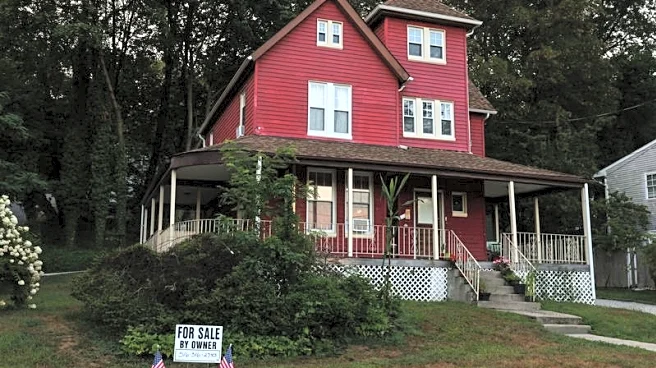What is the story about?
What's Happening?
The U.S. housing market is experiencing a shift as inventory levels rise, providing more options for buyers. According to recent data from the National Association of Realtors, sales of existing homes increased slightly in July compared to the previous month. Despite this uptick, the market remains sluggish, with only about 4 million existing homes expected to be sold this year, a figure significantly lower than pre-pandemic levels. High mortgage rates, averaging 6.6% for a 30-year mortgage, and a 50% increase in home prices over the past five years have made home buying challenging for many. However, home values are now increasing at their slowest pace in two years, largely due to the increased inventory, which is up 16% from a year ago. This trend offers buyers more leverage in negotiations, although homes are taking longer to sell.
Why It's Important?
The increase in housing inventory is a critical development for the U.S. housing market, potentially easing the affordable housing crisis. More inventory means buyers have more choices and negotiating power, which could lead to more balanced pricing. This shift is particularly significant in regions like the South, where fewer building restrictions have led to more new housing developments and subsequently lower prices. Conversely, areas like the Northeast and Midwest continue to face rising prices due to construction challenges. The current mortgage rate environment, influenced by factors such as U.S. debt concerns and potential Federal Reserve interest rate cuts, remains a key determinant of market dynamics. The ability to refinance at slightly lower rates offers some relief to homeowners, but many remain hesitant to move due to previously locked-in low rates.
What's Next?
Looking ahead, the housing market may see further adjustments as mortgage rates are expected to hover around the current levels through the end of the year. The anticipation of potential Federal Reserve rate cuts could influence future mortgage rates, although significant drops are not guaranteed. The construction of new homes, particularly in regions with fewer restrictions, is likely to continue impacting prices. Stakeholders, including policymakers and real estate professionals, will need to monitor these trends closely to address ongoing affordability challenges and support sustainable market growth.
Beyond the Headlines
The housing market's current state highlights broader economic and social implications. The affordability crisis affects not only potential homeowners but also renters, as high home prices can lead to increased rental demand and costs. Additionally, the regional disparities in housing development underscore the need for tailored policy approaches to address local challenges. The market's evolution may also influence urban planning and infrastructure development, as communities adapt to changing housing needs and population shifts.
AI Generated Content
Do you find this article useful?













